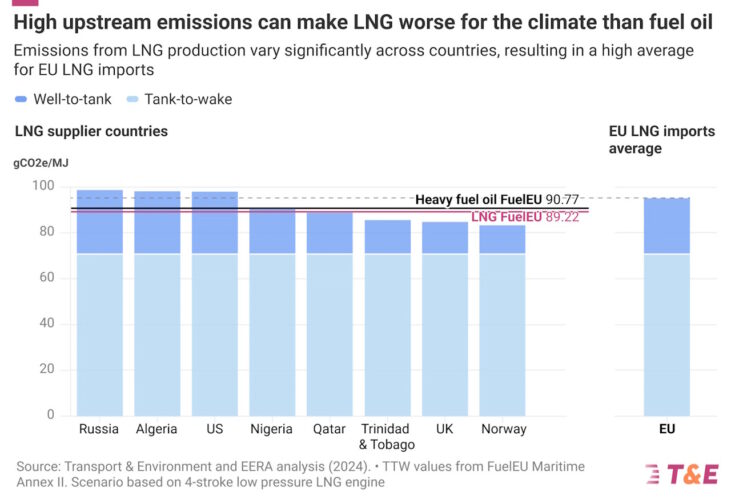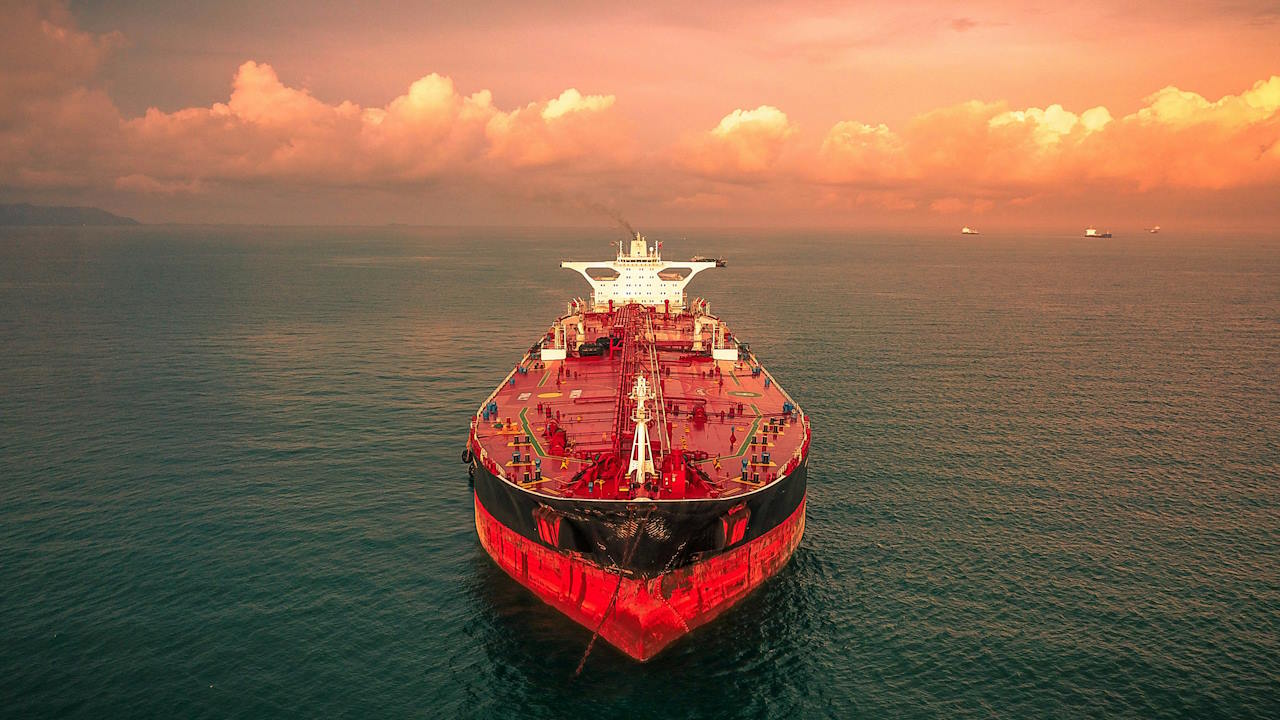Despite efforts to tout LNG as a cleaner alternative to traditional shipping fuels, new evidence on upstream emissions reveals that Europe’s LNG imports are 30 per cent more polluting than previously thought.
A new report authored by Energy and Environmental Research Associates, on behalf of Transport and Energy (T&E), shows that LNG imports to the European Union (EU) from major suppliers like the US, Qatar, Russia, and Algeria are nearly as polluting as the heavy fuel oil companies are trying to replace.
Oil and gas majors and some shipping companies have sought to present LNG as a cleaner alternative to traditional marine fuels and a potential transitional fuel in the shipping industry’s efforts to decarbonise.
And, while LNG combustion does emit fewer local air pollutants and less CO2 than conventional marine fuels, that’s not the end of the story.
Firstly, unburned methane that slips from LNG engines – especially the most polluting four-stroke low-pressure engines, commonly used in passenger and cruise ships – undermine any potential climate benefits during actual operations.

Even more problematic is the emissions that occur upstream during extraction, processing liquefaction, and transport. Specifically, these “well-to-tank” emissions can vary considerably depending on the production location and influence the overall climate impact of LNG-fuelled ships.
And, with almost 1,200 LNG-powered vessels globally and close to a further 1,000 on order, the impact on global emissions levels could significantly undercut the shipping industry’s efforts to decarbonise.
The EU’s FuelEU Maritime law – which will come into force at the start of 2025 – seeks to promote the use of renewable, low-carbon fuels and clean energy technologies for ships, and sets a maximum limit for the yearly average greenhouse gas intensity of energy used by ships above 5,000 gross tonnage.
Targets call for the greenhouse gas intensity of fuels used in the shipping sector to decrease over time, starting with a 2 per cent decrease by 2025, before reaching up to an 80 per cent reduction by 2050.
However, according to T&E, Europe’s LNG imports are 30 per cent more polluting than is currently assumed under the current FuelEU Maritime law, which fails to account for differences on the fuel’s origin, instead using a standardised upstream emissions factor of 18.5 grams of CO₂ equivalent per megajoule (gCO₂e/MJ) of energy.
The research shows that average upstream emissions from LNG imported to Europe, calculated based on the relative share supplied by each source, stands at 24.4gCO₂e/MJ, a discrepancy which would see a single large container ship running on LNG emit an extra 2,731 tonnes of CO₂ equivalent every year.

T&E is calling on the EU to amend the emissions factors in its FuelEU Maritime law to reflect this updated scientific data.
Similarly, T&E is calling on the International Maritime Organisation (IMO) – which is currently in the process of developing its own default emission factors for shipping fuels – to establish realistic upstream LNG values and standardise fuels’ emissions reporting.
“Fossil gas will never be sustainable and is even dirtier than previously thought,” said Inesa Ulichina, shipping officer at T&E.
“Extracting, transporting and burning methane is a leaky business. This costly pursuit is leading major shipping companies to waste billions on a solution that won’t bring them any closer to their zero-emission goals. Instead, they should focus on investing in green e-fuels production.
“The EU and the IMO can stop incentivising fossil gas by fully taking into account its full lifecycle emissions – from the ground to the sea.”










